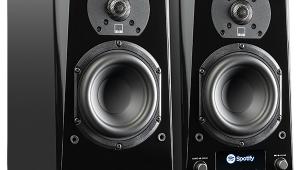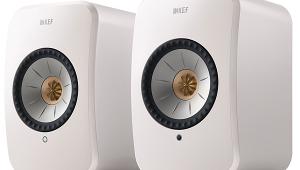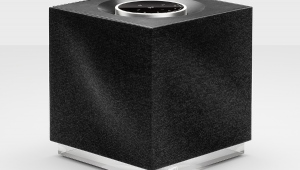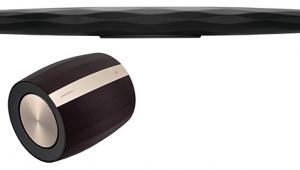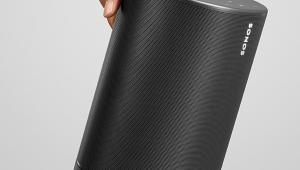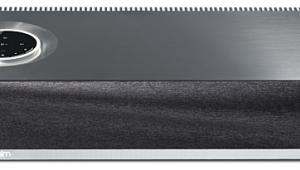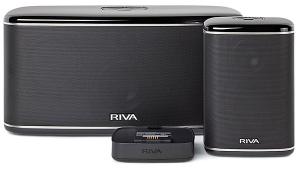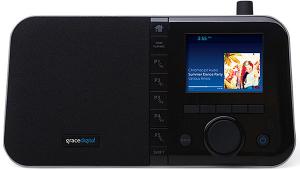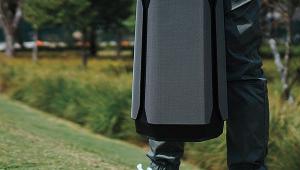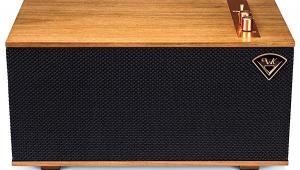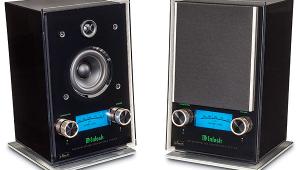Review: Dynaudio Xeo 5 wireless speakers Page 2
Performance
For those few readers who have not committed my entire opus to memory, that report included such adjectives as “winningly natural,” “highly articulate,” and “startling clarity,” plus a gushy bit about a soundstage that “actually extended slightly beyond the speakers and wrapped well out into the room.”
All these apply equally to the Xeo 5s, whose drivers and enclosure are virtually identical to the Excite X32 tower. (The Xeo 3 mirrors the Excite 16 bookshelf we evaluated then.) To recap, those Dynaudios met my expectations for smooth, accurate response almost perfectly, with nary a vocal coloration nor a top-octaves peak or dip, but with the extra measure of clarity and fine detail that distinguishes the loudspeaker world’s upper echelons.
And the Xeos repeated the performance, and more. While I found the passive bookshelf Excites’ bottom octaves to be controlled and accurate but finite, the Xeo 5s’ bass response, while equally smooth and tight, was substantially more extended — the miracle of active-loudspeaker digital signal processing (plus an extra woofer and a bigger box) at work. The Xeo 5 goes quite low: to rather below 40 Hz, I’d say, in my room. This is a good thing, since integrating a subwoofer into the wireless system, though not impossible, would be challenging for many folks, and would diminish the simplicity upon which Xeo is based.
As to that above-mentioned difference? It’s not the wireless-ness; it’s the powered-ness. With two 50-watt Class D channels onboard each speaker, the Xeo 5 is a fully “active” system, with all the attendant advantages. Too many to enumerate here, these include eliminating passive crossover networks, with their power- and dynamics-sucking inductors and capacitors, and introducing the freedom to DSP-tailor individual amps to individual drivers for optimal response and dynamic range. So while 2 x 50 watts per channel may not sound like all that much, active-speaker power can deliver substantially more dynamic range-per-watt than similarly rated conventional power-amp and passive-speakers pairings.
In consequence, the Xeos have the requisite dynamics and finesse to fully resolve serious music recordings, or at least more fully than many other systems. To wit, the smooth-jazz-pop of Jason Mraz on a tune like “5/6,” from an HDTracks.com high-rez download, showed impressive depth and texture: The opening vamp incorporated a very lifelike “puff” from every snare hit that didn’t modulate by even the slightest degree the deep, stringy definition of the bass. Meanwhile, the Xeos matched, or perhaps bettered, the midrange acuity of the passive Excites, so that the superbly recorded alto of Rebecca Pidgeon on “Spanish Harlem” (from Retrospective, another HDTracks download) carried a goosebump-inducing, three-dimensional body and presence.
The irony here is that although the Xeo transmitter accepts digital signals up to 48-kHz/24-bit, Xeo’s 2.4-GHz wireless link operates via CD-like, 48-kHz/16-bit digital audio, so playing high-rez files is, conceptually, a bit like de-icing your cake: Signals are reformatted to 48/16 en route. This won’t make much nevermind to most listeners, but still, when I listened to the same 96/24 files through my reference cans and headphone amp, I heard subtly greater air and “polish” when things got busy. (And yes, I agree that any observation contrasting speaker and headphone listening is dubious at best.)
I also confirmed Dynaudio’s opinion that the transmitter’s digital inputs can deliver better sonics than its analog jacks, since they format digital audio to wireless directly, without analog-digital conversion. The difference seemed marginal to me, but I consequently switched to an optical-digital input for most of my ongoing listening.
The Xeo 5s play loud enough to satisfy rational, uninebriated grown-ups, but if you want dance-floor levels it’s probably best to look elsewhere. It’s difficult to overdrive them with real-world signal levels — a fringe benefit of the closed-loop, active-speaker concept — though when fed full 2-volt preamp signals, the Dynaudios could sound crabby, and finally distorted, over the last 3 or 4 clicks of their volume range.
But — and this is precisely the point — in every other respect the Xeo 5s sounded fabulous, no matter what I played and however the system was hooked up. What this boils down to is great-sounding, full-range compact towers with unusual “dynamic integrity” or “dynamic detail,” or something. Whatever it is, I hear it from comparatively few passive layouts, including, surprisingly, many high-end ones. It’s subtle and difficult to pinpoint, but I know it when I hear it, and I heard it from the Xeos.
Ergonomics
The Xeo transmitter, available with either speaker model, is a black box about half the size of an AppleTV. A card-style remote supplied with each speaker pair provides power, volume/mute, input-select 1-3, and access to 3 transmission channels in case of conflicts, although even with a Wi-Fi network and two different cordless phones I had none.
To test the system’s multiroom capability, I located the 3s in my kitchen, about 40 feet distant and through a couple of walls, where they had no difficulty acquiring a wireless signal or playing music glitch-free.
They sounded just great there, too, and the remote worked without issue to select inputs back at the transmitter despite the distance. (In fact, I later performed a direct comparison back in the studio, and the Xeo 3s were all but indistinguishable from the 5s, absent a half-octave or so of deep bass.)
